Don’t be cool. Be Super Cool!
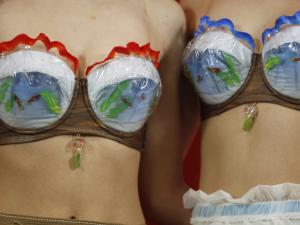 The Japanese lingerie company Triumph has introduced a ‘Super Cool Bra’ to insure that women not only stay cool this coming summer but also keep their electricity bills down. The bra is equipped with removable gel packs that can be placed in the freezer (designed, by the way, to look like a fish bowl), and an attachable ladle so that women can douse themselves with sprinkles of water when the gel packs don’t quite do the trick. There is also a removable fan that can be used any time to boost the chill factor to ‘Super.’ And to complete the package, the bra also includes a sprig of mint and a wind chime to boost other senses that will provide a sense of cool.
The Japanese lingerie company Triumph has introduced a ‘Super Cool Bra’ to insure that women not only stay cool this coming summer but also keep their electricity bills down. The bra is equipped with removable gel packs that can be placed in the freezer (designed, by the way, to look like a fish bowl), and an attachable ladle so that women can douse themselves with sprinkles of water when the gel packs don’t quite do the trick. There is also a removable fan that can be used any time to boost the chill factor to ‘Super.’ And to complete the package, the bra also includes a sprig of mint and a wind chime to boost other senses that will provide a sense of cool.
The point of this neat design is evidently to encourage Japanese consumers to cut down on their electricity consumption during the coming Japanese summer and sadly, the bra will not be massed produced. However, when I first stumbled across this wondrous design, all I could think was ‘menopause.’
Gel packs, ladles, fans – it’s a veritable hot flash bust-er!
Anyone want to bet on the knock-offs? I may need to take a trek to NYC’S Canal Street in search of a Super Duper Cool Bra. Ladle and fishbowl optional!
Happy Friday!
Read More
Household work..the key to better sleep?
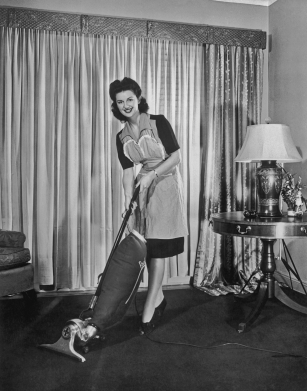 Have I got your attention yet?!
Have I got your attention yet?!
It’s no surprise that hot flashes and night sweats rank among the most important factors when it comes to poor sleep. However. less clear are the factors that may provide a buffer against the flashes. And aside from the usual suspects e.g., crankiness and moodiness or the inability to focus, poor sleep has been linked to heart disease and obesity, among other less desirable health conditions.
So, what can you do?
I’ve written about the benefits of physical activity and amelioration of menopausal symptoms many times on Flashfree. And, I imagine I will continue to do so. But what about sleep? There is evidence that physical activity can help bolster both sleep quality and sleep quantity. Yet, few people have examined the domino effect, i.e. fewer hot flashes ← physical activity → better sleep. Moreover, even fewer have considered the benefits of non-leisure physical activity, like housework.
Now, before you accuse me of setting women back 60 or 70 years, let’s consider exactly what I am suggesting.
According to research, women participate in less leisure time physical activity but greater levels of household physical activity than their male peers. This is apparently truer among ethnicities other than Caucasian (especially African American), who also tend to have greater levels of obesity and poorer sleep characteristics. So, it would follow that by increasing both, women might fare better in the sleep department, right?
In fact, when researchers took a small group of women participating in the larger SWAN study and evaluated their self-reported and scientifically measured sleep patterns for four nights, that is exactly what they found. The group, which was comprised of both White and African-American women, reported having flashes or sweats, were between the ages of 54 and 63, had an intact uterus and were not on medications that could affect hormone levels or symptoms. And while the number of women was quite small (only 52), they fit into the full spectrum of BMI targets (from normal to obese to overweight). In addition to sleep patterns, they also shared details of their most common daily physical activity (how often, how long and how intense) and household/caregiving responsibilities (time spent caregiving, preparing/cleaning up after meals, and routine chores as well the intensity of these activities).
Not surprisingly, women who had greater levels of leisure physical activity were 8 times more likely to report that their sleep quality was better than their less active peers. And, women who reported greater household, non-leisure physical activity awakened fewer times during the night, but only if their BMI levels were lower. Yet, the benefits were mostly seen more among White women. Even more troubling is that the researchers say that they could not determine the ‘why’ of these findings, even though they conducted several different types of analyses and comparisons.
The good news is that for some women, engaging in greater levels of household physical activity and leisure physical may reduce sleep disturbances, especially if they are not overweight. For others, especially my African-American sisters, the mystery remains. African-American women often report more severe hot flashes than their White peers. And while experts have pointed fingers towards rates of obesity or distinctions in estrogen levels or smoking history, the reasons remain unclear.
Meanwhile, while I am not necessarily suggesting that you increase your household responsibilities, I do believe that even with the limitations of this study, more physical activity may beget better sleep and possibly fewer or less severe hot flashes. Finally? Can we please find some effective and viable strategies for women of colour? Although the menopause experience may vary by ethnicity, as women, we need to find solutions that work for most of us, not some of us.
Read MoreIso what? Iso who? Hot flashes, isoflavones and clinical trials
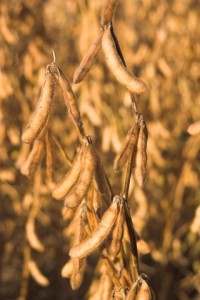 I’ve long been intrigued by the replacement of hormone replacement therapy with soy isoflavones. Yet, studies looking at their effectiveness for alleviating hot flashes and other vasomotor symptoms have been mixed. The reasons for this are multiple, and point to such factors as dose and actual composition of the supplements used, severity of hot flashes and how often women are taking isoflavones over the course of the day. Researchers have also discovered that only 20% to 30% of Westerners produce equol, (there’s even a dispute over this stat) a component of the potent isoflavone dadzein that has an affinity for estrogen and appears to be slowly cleared from the body;(note that both of these factors contribute to its beneficial effect against flashes.
I’ve long been intrigued by the replacement of hormone replacement therapy with soy isoflavones. Yet, studies looking at their effectiveness for alleviating hot flashes and other vasomotor symptoms have been mixed. The reasons for this are multiple, and point to such factors as dose and actual composition of the supplements used, severity of hot flashes and how often women are taking isoflavones over the course of the day. Researchers have also discovered that only 20% to 30% of Westerners produce equol, (there’s even a dispute over this stat) a component of the potent isoflavone dadzein that has an affinity for estrogen and appears to be slowly cleared from the body;(note that both of these factors contribute to its beneficial effect against flashes.
Despite these challenges, what would happen is you simply upped the dose and/or frequency? Would it change the’ iso what’ or ‘who’ to an actual ‘iso yes!?’
That’s exactly what researchers sought to learn when they recruited 130 peri- and post-menopausal women with severe hot flashes (i.e. five or more a day). Women who produced equol and those who did not were separated and then randomly asked to take placebo, low dose (33 to 66 mg/day) or high dose (110-200 mg/day) equol or placebo capsule (s) and take them once daily or two to three times daily. They also kept daily hot flash diaries, assessing each hot flash by its intensity, daytime or nighttime occurrence and how bothersome they were. They met with the research team face to face twice — 9 weeks in, and 3 weeks after the study completed.
The findings made it quite clear that dose and frequency are almost as important as whether or not a person is able to produce equol. In fact, when women took higher doses of isoflavones more frequently, they had 2.4 per day fewer hot flashes than women taking the lower doses just once a day. And, the flashes were significantly less severe. What’s more, most of these benefits were realized during the night, when, as most of us know, flashes and sweats are especially disruptive. Moreover, there was not much of a difference between women who are able to produce equol and those who are not; while these women did experience greater declines (as much as 10%) in both how intense their flashes were and how frequently they occurred, the difference was apparently not statistically significant.
So, let’s cut through the scientific clutter:
- Higher doses of isoflavones tend to have a greater effect than lower doses
- More frequent dosing (two to three times a day) appears to be more beneficial than once a day dosing.
- Greater benefits are likely to be seen in women who naturally produce equol, especially when it comes to hot flash intensity
- Both perimenopausal and menopausal women may potentially benefit from higher, more frequent dosing.
This type of research is just beginning and the findings need to be teased out in larger numbers of women. It’s also unclear if spreading the lower dose out throughout the day would make a difference. Still, what these findings do bring to light is an evolution of thinking and that’s what makes me most excited. Rather than determining that isoflavones are useless, researchers are finally starting to treat them as though they were pharmaceutical agents, using them in randomized clinical trials, varying doses, frequency and patient populations and truly, thinking outside the box.
Read More
Wednesday Bubble: Are you resilient? Or vulnerable?
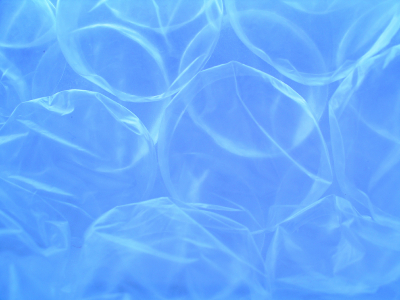 Hot flashes and night sweats. Why is it that some women seem more prone to one or both and others simply sail through menopause with flying colours, that is, why are some women resilient to symptoms and others vulnerable? Are genetics or race or psychosocial factors at play? Moreover, are there ways to predict which camp you fall into before you start menopause so that you can employ preventive measures or mentally prepare for what may come?
Hot flashes and night sweats. Why is it that some women seem more prone to one or both and others simply sail through menopause with flying colours, that is, why are some women resilient to symptoms and others vulnerable? Are genetics or race or psychosocial factors at play? Moreover, are there ways to predict which camp you fall into before you start menopause so that you can employ preventive measures or mentally prepare for what may come?
By examining information collected on over 4,000 women across the UK, researchers believe that they may have found a few answers to why some women do and some don’t. Here’s the lowdown:
Researchers first grouped 23 menopausal symptoms into six unique clusters, psychological, sexual, general, musculoskeletal, menstrual and bloating. They then further divided them by frequency and severity. The results?
Resilience to hot flashes appeared to be bolstered by having experienced less bother during menstrual periods, having fewer general symptoms (such as breathlessness, a frequent need to urinate, headaches or dizziness) and the perception that menopause and its symptoms did not have a significant consequence on one’s life.
Conversely, vulnerability to hot flashes appeared to be related to having one or more children, having a higher (>25) BMI, experiencing night sweats and the perception that menopause and its symptoms had a moderate to highly significant life impact.
How’s your physical health? Evidently the worse it is, the more vulnerable you are to night sweats. If you have hot flashes, you may also be more vulnerable; accompanying muscle and joint aches So does having sleep difficulties or a perception that menopause has a significant impact on your life. Women who are resilient to night sweats don’t smoke, tend to rely on psychological strategies to help manage their symptoms and like their hot flash counterparts, don’t perceive menopause as having a significant impact on their lives.
If you are wondering why any of this is important or relevant, just think about it: having a greater perception that menopause has a negative overall impact on one’s life can impact resilience or vulnerability to some of its most troublesome symptoms: hot flashes and night sweats. This suggests that behavioral or psychological interventions, seeking social support or simply learning more about the ‘pause may potentially impact how bad (or good) it ultimately is. Moreover, clusters of these factors appeared to have a greater or lesser impact, which truly challenges the ‘one size fits all’ model of treatment.
Menopause and (and how we go through it) isn’t always our choice. But isn’t it refreshing to know that there are aspects about the ‘pause that ARE in your control? Stop smoking if you are a current smoker. Think about how you allowing aging to impact how you perceive your life and if there are steps that you can take to do a 180 attitude adjustment. Try to shed a few pounds if you can. And if you are in the premenopausal phase, take some steps now to shift the ‘tude when your period hits.
Resilient or vulnerable? It may be up to you, at least in part.
Read More
Wednesday Bubble: Thar she blows
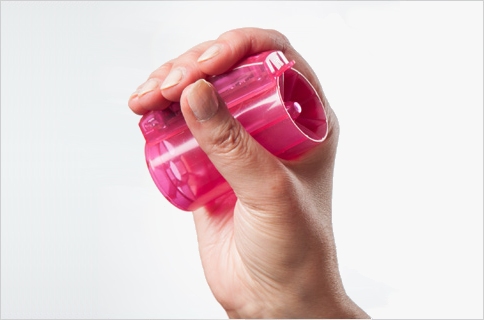 As my Cold Front friend Susie Hadas knows, I take no prisoners on this blog, especially on Wednesdays. So, when ‘BlowMeCool’ approached me via the Twitter back channels to review their mini-fan, I warned the administrator in advance that things might not be so pretty.
As my Cold Front friend Susie Hadas knows, I take no prisoners on this blog, especially on Wednesdays. So, when ‘BlowMeCool’ approached me via the Twitter back channels to review their mini-fan, I warned the administrator in advance that things might not be so pretty.
Let’s just start with the name.
Blow Me. Yes, there is another word there but I find that I can’t quite get to the ‘cool’ part. I keep getting stuck on blow me. And I am not sure if that speaks more to my foibles than to theirs’.
In an accompanying press release, BlowMeCool is described as ‘a mini-fan [with] not exposed propellers or blades. Its unique design allows it to operate while hidden in the hand, delivering a stream of air that women who experience hot flashes will love.’ “It’s so quiet nobody even knows when I’m blowing myself cool – having a friendly little fan during my hot flashes – is pretty cool,” a user is quoted as saying.
Yet, here’s the rub. Unless you have hands the size of a man, this little nifty device is not quite discreet enough nor is it quiet enough, say, for pulling out in the middle of a meeting with new clients. But I digress.
When I opened the package, I was struck by the fact that BlowMeCool appears to have little hot flashes of its own as its battery runs out of juice. Irony much?! However, I applaud that manufacturer for the chargeability factor; you simply plug this nifty little device into your computer and bam! You are charging its lithium battery. Wait! What if you don’t have a computer? Huh!
I truly believe that the company is on to something special here. But I’m waiting on the next generation — something even smaller, quieter and a model that offers the user charging flexibility. Two hours of cool ain’t bad but if you out and about and nowhere near a charging station, it might not be enough for the woman with hourly flashes. And the plug for the husband complaining about night sweats? This little itty fan is not going to dry the sheets when the sweats hit. And the name? Please please please think about a new name. The name is a recipe for disaster.
Does BlowMeCool ‘blow?’
Yes and no. You decide.
[Disclosure: BlowMeCool provided me with a device to review but did not provide any compensation for this post. Nor did I request any. The opinions are strictly mine.]
Read More






